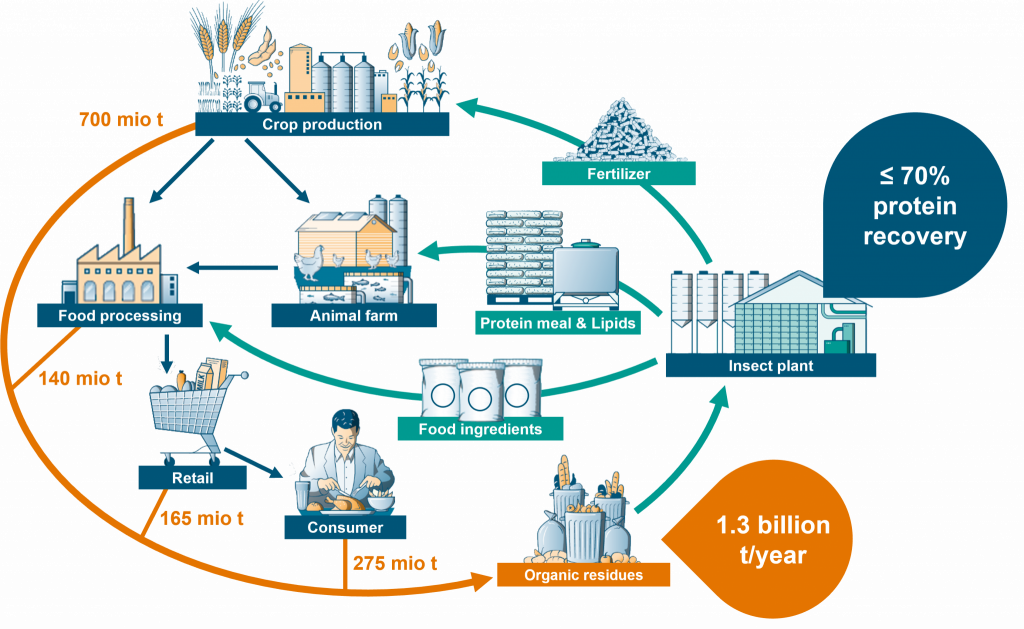Insects contribute to a circular economy
A growing population, coupled with diminishing natural resources, means the race is on to find alternative sources of nutrition. One such source is insects. Already used in cuisines around the world, insects are high in protein and amino acids. They also have a major advantage in that – with an ever-shrinking supply of agricultural land – cultivating them requires no fertile land.

Accelerating insect plant projects
The Insect Technology Center is designed to accelerate large-scale insect plant initiatives. The new test facility will allow Bühler’s customers to demonstrate technological feasibility before investing in their own pilot plants. The team believes that seeing industrial insect technology in action will make it more tangible to customers who are interested in becoming active in this space.
At the heart of the Center there are two insect growth chambers that mimic industrial production conditions. These chambers have a sophisticated climate control system and are equipped with numerous sensors. The data collected is used to optimize growth conditions to maximize production efficiency. The infrastructure can also be sent to any location, making it accessible to customers worldwide.
The facilities are currently designed to help insect companies, startups and food and feed companies to evaluate the feasibility of producing black soldier flies and mealworms as a sustainable protein source. They can also be used to conduct larvae growth trials with various feedstock, develop product samples, evaluate breed solutions, and run training sessions.
The ITC was funded by Switzerland’s Federal Office for the Environment (FOEN), in recognition of its contribution to a more sustainable food system.

The fact that we are now producing protein flour, lipids and fertilizers based on insects, and doing so on an industrial scale, is something new. You can, perhaps, imagine the beginnings of modern mills 150 years ago occurring in a similar way.